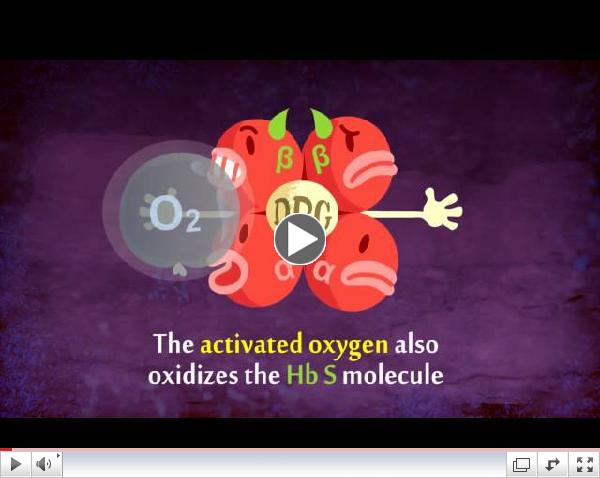Management of simple nail bed lacerations & sublingual hematomas.
| |
"Nail bed injuries can be classified into subungual hematomas, simple or stellate lacerations, crush injuries & avulsions." The third finger is most frequently injured with the tip most prone to damage.
Subungual hematomas can often be managed by nail trephination ( the creation of a small /adequate sized hole in the nail ), which allows for the release of the blood, thereby decreasing pressure & pain (while there appears to have been some controversy over this method in the past, it apparently remains the best first approach).
Nail bed lacerations require surgical repair (under local anesthesia/conscious sedation in a "bloodless field"). Simple uncomplicated lacerations may be managed by an ED physician while more complex injury usually requires consultation & treatment by a pediatric hand surgeon. Pediatric Emergency Care |
|
Homogenization & fat loss during continuous infusion of breast milk.
| |
Milk is an emulsion of butter fat globules in a water-based fluid that contains dissolved carbohydrates, proteins and minerals. On standing, fresh milk separates into a creamy high fat layer on top of a much larger lower fat layer. Homogenization of milk is a treatment to prevent the creamy layer separating out.
A study of three different types of human milk homogenization processes indicates that a decreased amount of fat loss occurs when milk containing infusing syringes are agitated hourly.
|
|
Energy drinks may cause seizures, heart problems in young children.
| |
Though energy drinks are typically consumed by teenagers and young adults, US poison control centers report that a substantial number of poisonings are occurring in children under the age of six years. Some energy drinks have >500 mg of caffeine per serving (compared to 100/150mg in a typical cup of coffee or 14 cans of soda) and caffeine poisoning (tremors, seizures, nausea and vomiting, chest pain, hypertension and cardiac arrhythmias) can occur in teens following 100/mg a day consumption, and in young children (aged <12 years) with an intake of 2.5mg per kilo body weight.
The AAP recommends that energy drinks should never be consumed by children or adolescents. Pediatrics |
|
Updates in Pediatrics is brought to you by:
| |
|
|
Migraine equivalents as part of the Migraine Syndrome in children.
"Migraine is one of the most common disorders seen in pediatric neurological practice".
Migraine equivalents are a common group of repetitive periodic and paroxysmal neurologic diseases that present frequently without headache being a prominent symptom and which have complete remission between episodes. Diagnoses include abdominal migraine, cyclical vomiting, benign paroxysmal vertigo, paroxysmal torticollis, aura without migraine and confusional migraine.
A study from a pediatric headache center indicates that abdominal migraine, limb pain and motion sickness appear to be the most common migraine equivalents found. These may present before, with, or be part of the migrainous syndrome.
Pediatric Neurology
|
|
Borderline Personality Disorder (BPD) in adolescence.
BPD is a severe mental disorder that is characterized by pervasive long-term personality lability, emotional and behavior impulsivity, unsteadiness in interpersonal relationships/self-image and a high suicide rate. DSM-5 lists five of nine characteristics that are associated with and define this severe functional disability. Data suggests a cumulative prevalence rate of 1.4% of young people. As BPD is frequently associated with other psychiatric and personality disorders, and is both a significant emotional and financial burden to a family, it is important for pediatricians to diagnose and treat these children early. This article is well worth reading (Ed).
Pediatrics
|
Video Feature (via YouTube)
 | |
What is Borderline Personality Disorder?
(Mental Health Guru)
|
|
Immunologic effects of hydroxyurea in Sickle Cell Disease (SCD)
Hydroxyurea is anticancer drug used in a variety of disease processes and is effective by decreasing T-cell production and deoxyribonucleotides. It is also used to decrease the frequency of painful attacks in sickle cell disease which it does by increasing the concentration of fetal hemoglobin.
 | | Sickle Cell Disease |
Children with SCD have a greater propensity to develop encapsulated bacterial infections. A study investigating the effects of hydroxyurea on T-cell subsets, and antibody responses to pneumococcal and measles, mumps and rubella vaccines in SCD patients indicates that hydroxyurea does NOT appear to have a significantly deleterious effect on the immune system of these children.
Pediatrics |
|
Birth size and brain function 75 years later.
It appears from the AGES (Age Gene/Environmental Susceptibility) population-based cohort study (after adjustments made for intracranial volume, demographics and medical history) that smaller birth size (as an indicator of a suboptimal intrauterine environment) is associated with a smaller brain at 75 years of age; with slower processing speeds and reduced cognitive functioning occurring in those adults with lower educational levels.
Pediatrics
|
|
|
Download, print and pin this information on your office wall.
-This is a "Must Have" (Ed.)
|
Underwriting Opportunities
|
With a circulation of over 5,000, Updates in Pediatrics offers an excellent opportunity to promote your brand at affordable rates.
|
|
|